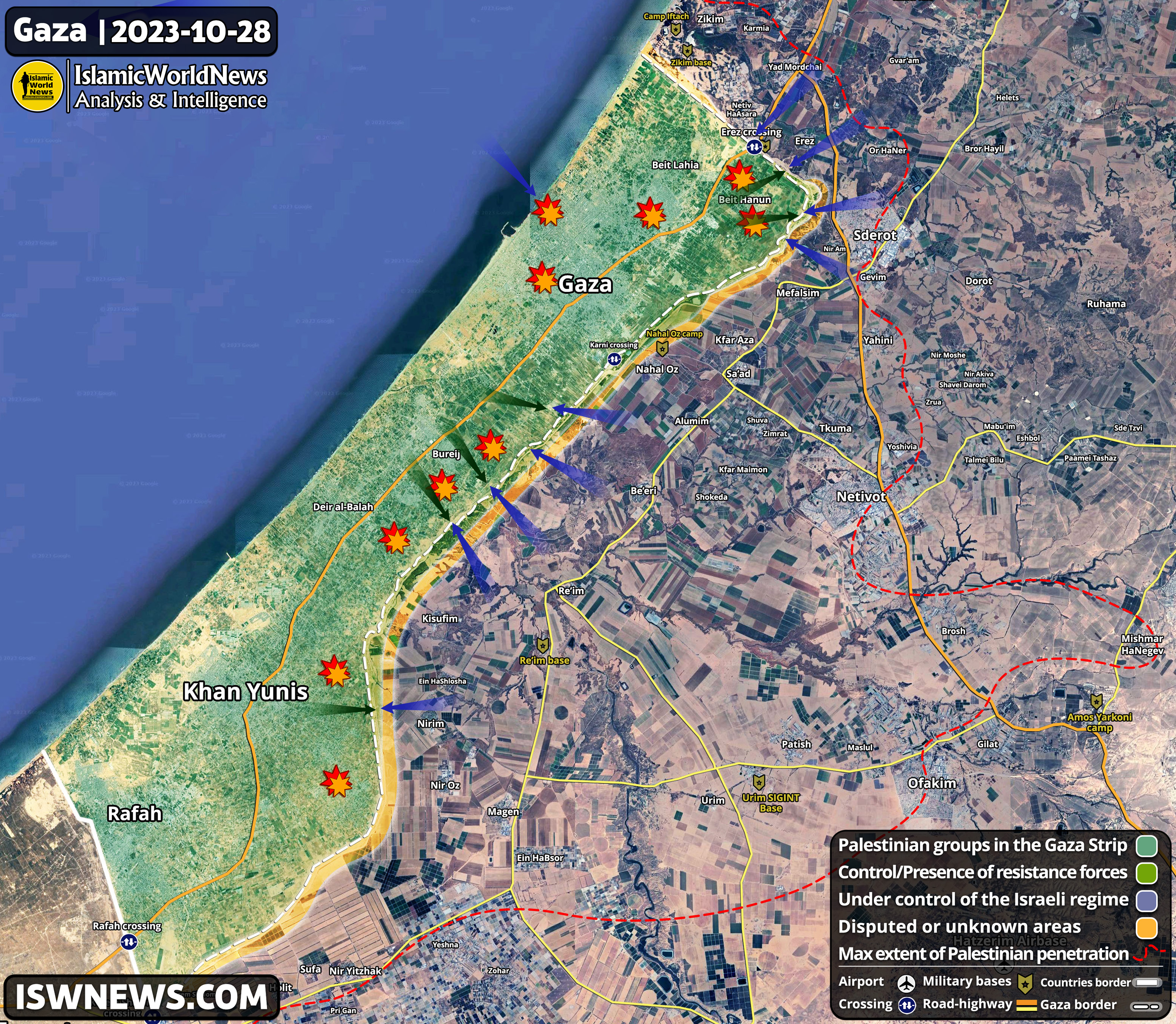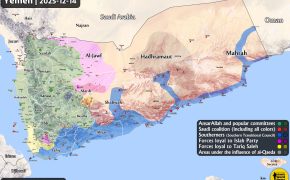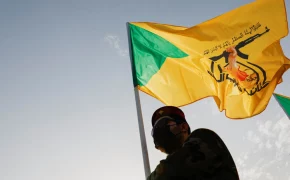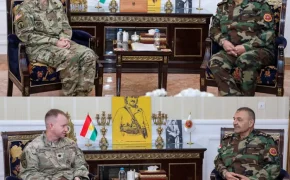Israeli Army Kicks Off Ground Invasion Of Gaza; How Resistance Front Emerged Victorious On First Day?

Friday night, the Israeli army launched attacks on three fronts in the northern, eastern, and southeastern areas of the Gaza Strip. These attacks were focused on Beit Hanoun city in the northern front, Al-Bureij refugee camp in the eastern front, and the eastern outskirts of Khan Yunis city in the southeastern front.
According to statements by the Hamas-affiliated Izzedine Al-Qassam Brigades and the Islamic Jihad-affiliated Al-Quds Brigades, the Israeli army’s attempts in the Al-Bureij and Beit Hanoun fronts were more than other fronts, and all their attempts to enter Gaza were unsuccessful.
Some news stories have been reported about Israeli forces advancement in the Al-Bureij front, but they have not been confirmed by any official sources of Palestinian resistance groups. If these news stories were factual, it seems that resistance forces have left some parts of Gaza’s territory as a sort of a trap for Israeli forces to reduce the intensity of their attacks and repel them by causing more damage to the enemy.
Overall, Israel’s first ground attack has not yielded any specific results, and most of the tank and armored vehicle movements in these fronts have received a strong response from anti-armor units of Palestinian resistance groups. The resistance forces are said to have fired six anti-armor missiles at Israeli tanks in the Beit Hanoun and Al-Bureij fronts.
In general, the Israeli army has a simple but difficult path to control the Gaza Strip through a ground invasion. They know that to eliminate Palestinian resistance, they must cut Gaza and besiege its main cities, and then gradually engage in hard and expensive urban warfare. Along with this strategy, aerial and naval support, media warfare, political support from the United States and European countries in the international arena, and various other military and economic measures would play essential role.
In addition to these measures, Israel faces external attacks from the four directions of north, south, east, and west. To neutralize these attacks, they need the participation of important regional countries such as Saudi Arabia, Egypt, and Turkey, in addition to the extensive presence of the United States.
It should be noted that Saudi Arabia’s defense and NATO radar station in Turkiye rushed to help with the USS Carney missile destroyer in countering the first operation by Yemen’s Ansar Allah movement against the Israeli regime, and the Egyptian army also has extensive cooperation with the Tel Aviv regime in besieging the Gaza Strip and preventing drone attacks.
In general, the likelihood of success for the Israeli army’s ground attack on the Gaza Strip will increase with external pressure from the resistance axis, while it will also enhance cooperation from the United States and regional countries with Israel, and other aforementioned measures. Therefore, at this stage of the Gaza war, the role of Hezbollah and Iranian forces in Syria will become more prominent, and it is expected that attacks from these fronts will be carried out at higher levels.
Read more: Latest Military Developments Of Gaza And Northern Palestine, 28 October 2023





Comment